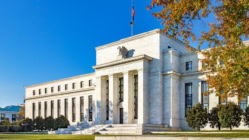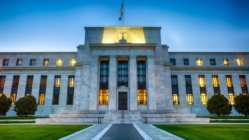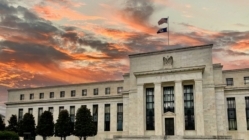
The average interest rate in the U.S. is about 6.90%, according to Mortgage News Daily.
The 10 Year Treasury Yield is about 3.66% today, as I type this blog.
That is a difference of 4.24%
In January of 2021, the average mortgage rate was near an all-time low of about 2.8%.
While at the same time, the 10 Year Treasury Yield was about 1.1%.
That difference was only 1.7% and much closer to the normal spread between the 10 Year Treasury Yields and mortgage rates.
When borrowers used to ask us the best way to track the direction of mortgage rates, we would tell them to track the 10 Year Treasury Yield because mortgage rates track 10 Year relatively closely.
The problem though is that the spread between the 10 Year Treasury Yield and mortgage rates has grown much larger since the Fed started to raise interest rates last year, and they have not been moving in lockstep over the last year.
Why Is the Spread Between 10 Year Treasury and Mortgage Rates So Much Larger Now?
Here are some of the reasons why the spread is so much larger, and the news is mostly good:
- No More Quantitative Easing (QE). When the Fed is not buying mortgage-backed securities, there is much less demand for mortgages overall and that has a tendency to push yields way higher. This argument is offset though by the fact that the supply of mortgages has also dropped off by about 2/3, as refinances have largely dried up and there are far fewer purchases too. So, yes, there is way less demand with QE out of the picture, but there is far less supply too. But, for those readers who are convinced that the lack of QE is the main reason why mortgage rates are so much higher now, they should be encouraged by all the predictions by the likes of Jeff Snider and Alf Peccatiello that QE will return in the near future.
- Fear of Early Payoffs! This is the good news! Investors are paying less for mortgages right now (and demanding higher rates) because they believe that today’s mortgages will refinance/pay off relatively soon – which means that many investors expect rates to fall sharply in the near future. 10 Year Treasuries do not pay off early like mortgages, and that is part of the reason why they can command premiums or lower yields.
- Mortgages Are Not “Pristine Collateral.” This is a point Jeff Snider makes often. The reason the 10 Year Treasury Yields (and all other Treasury bond maturities) are so low is because they are backed by the full faith and credit of the United States, and that is what makes them “pristine collateral.” And that is something banks desperately need to do business on a day-to-day basis to operate (so they can borrow money and access liquidity when they need it), per Mr. Snider. This desperation for pristine collateral is in fact why the demand for Treasury bonds and bills remains so high (and why yields remain surprisingly low), despite all the troubles the U.S. is facing.
- Competition With Short-Term Treasuries. Because the yield curve is inverted with much higher short-term rates than normal, many investors are buying short-term government T-bills (with maturities of one year or less) instead of Mortgage-Backed Securities. This reduction in demand for mortgages pushes up yields or rates for mortgages.
In any case, Mortgages and Mortgage-Backed Securities are not considered “pristine collateral” for a variety of reasons, and that is why they are in much lower demand in general.
Conclusion, or the really, really good news: Not only will rates likely fall, but the spread between Treasury Yields and mortgages will likely tighten up again too – meaning that rates will just get that much lower.
Sign up to receive our blog daily
























